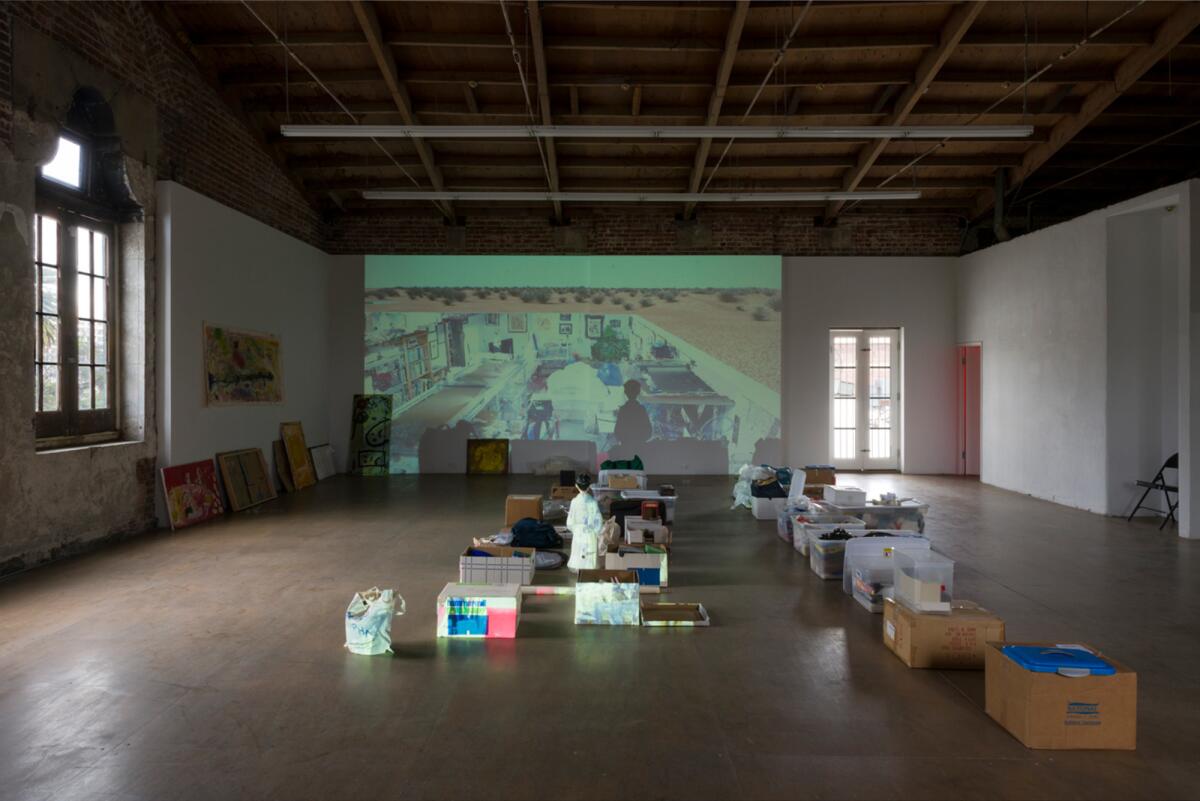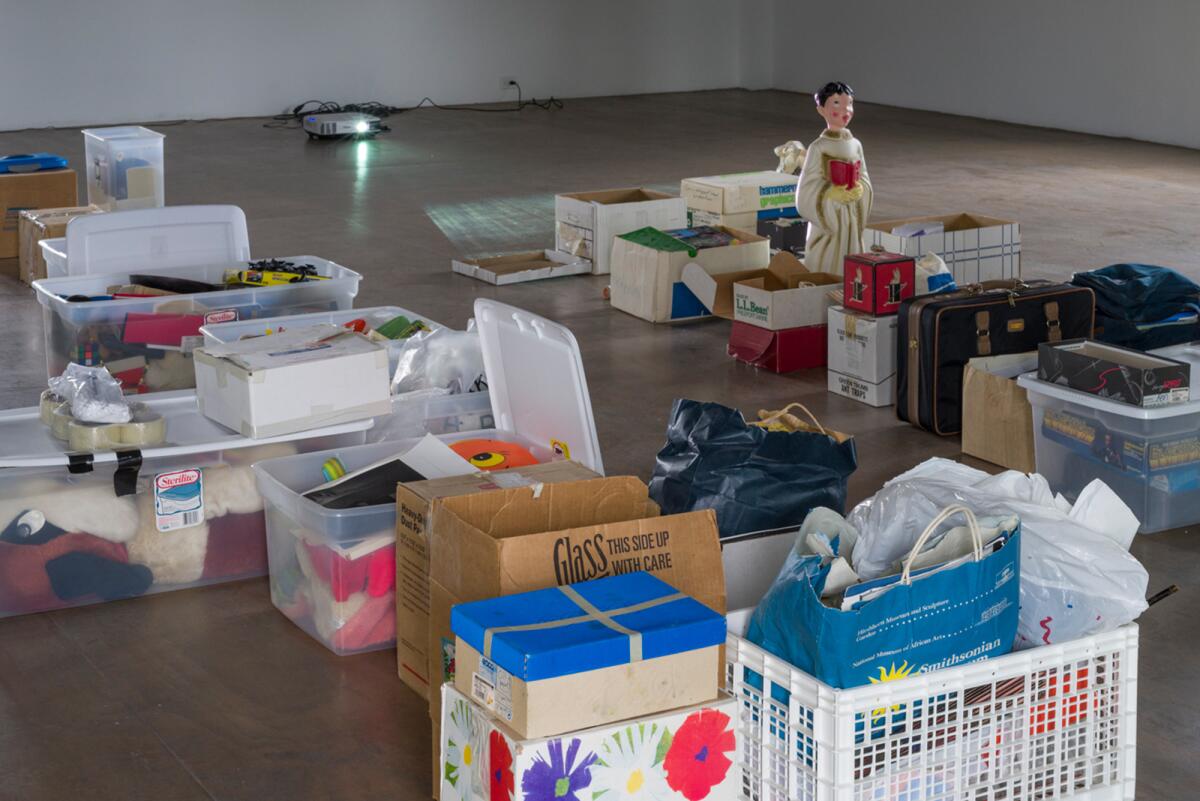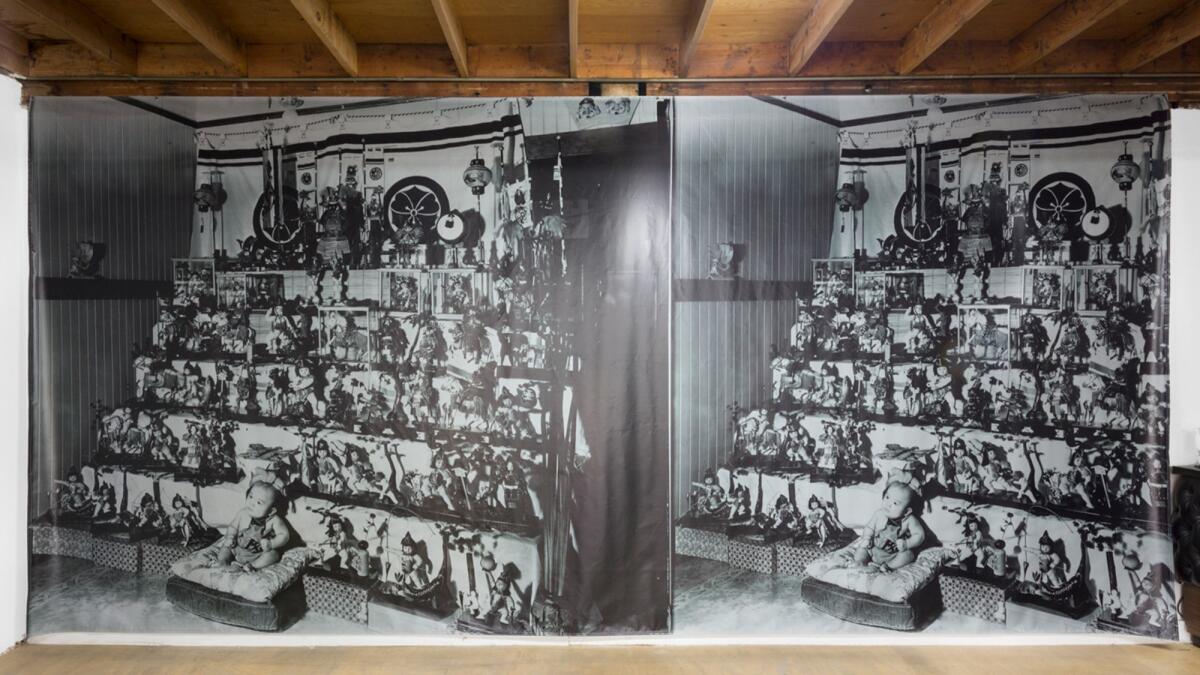Review: The mystery of the puppet-head box: Why an Iowa childhood has been unpacked in an L.A. gallery
- Share via
A closed cardboard box in Ken Okiishi’s installation reads, “Ken’s puppet head supplies.” Among the many containers in Reena Spaulings’ cavernous gallery, it’s the one that sparks the most curiosity. What kind of puppets? Why just heads? And what might they tell us if we opened the box?
The boxes contain the artifacts of Okiishi’s childhood in Ames, Iowa, collected from his parents’ basement and driven by him to L.A. The effect is rather like a garage sale: an assortment of tchotkes, toys, books and magazines, inflected with hints of Christianity and piano practice. The artist’s future is foreshadowed by several enthusiastic if embryonic paintings, a fantastic homemade tuxedo jacket of clear plastic striated with silvery threads, and of course, the tantalizing suggestion of puppets.
On his way to L.A., Okiishi stopped at the Utah site of the Topaz internment camp during World War II. He shot video of the desolate landscape and the van full of his childhood stuff. This video, spliced with a 3-D rendering he made of his parents’ basement, is projected on the wall above the boxes. A statue of a dark-haired choirboy standing amid the bins creates a boy-shaped void in the projection, like Okiishi’s former self, bearing witness.


Although his family was not interned, the camps and the racism they represent are clearly on the artist’s mind. The fully packed van evokes images of internees allowed to bring only what they could carry. In both cases, the baggage represents the corralling and compression of life into boxes.
In the other room is a 2009 video Okiishi’s mother made to document all the objects in the family home. She created it for insurance purposes, but Okiishi reframes it as an inadvertent family history, a snapshot of a given moment that reverberates with what came before.
Reaching further back is a large, mural-sized photograph of his father’s first Boy’s Day celebration in Hawaii, circa 1940. (Boy’s Day, now called Children’s Day, is a traditional Japanese holiday celebrating boys and masculinity.) Okiishi’s chubby infant father sits at the base of an enormous tiered dais filled with row upon row of male dolls, attired and posed for battle. In an artist’s statement, Okiishi relates how after the attack on Pearl Harbor, his grandfather threw all the family’s “Japanese” things into the ocean, for fear of being perceived as the enemy. The artist’s fascination with his family’s surviving artifacts feels like furious mourning for this original erasure.

Reena Spaulings Fine Art, 2228 W. 7th St., 2nd floor (entrance on South Grand View Street), L.A. Through June 16; closed Sundays-Tuesdays. (213) 908-5033, www.gagareena.com
See all of our latest arts news and reviews at latimes.com/arts.
MORE ART:
Deborah Roberts' powerful statement of black female identity
A 14-foot-long painting of trash makes an epic argument for 'The Feminine Sublime'
MOCA has lacked an effective director for nearly 20 years. It's time for change
The biggest entertainment stories
Get our big stories about Hollywood, film, television, music, arts, culture and more right in your inbox as soon as they publish.
You may occasionally receive promotional content from the Los Angeles Times.







